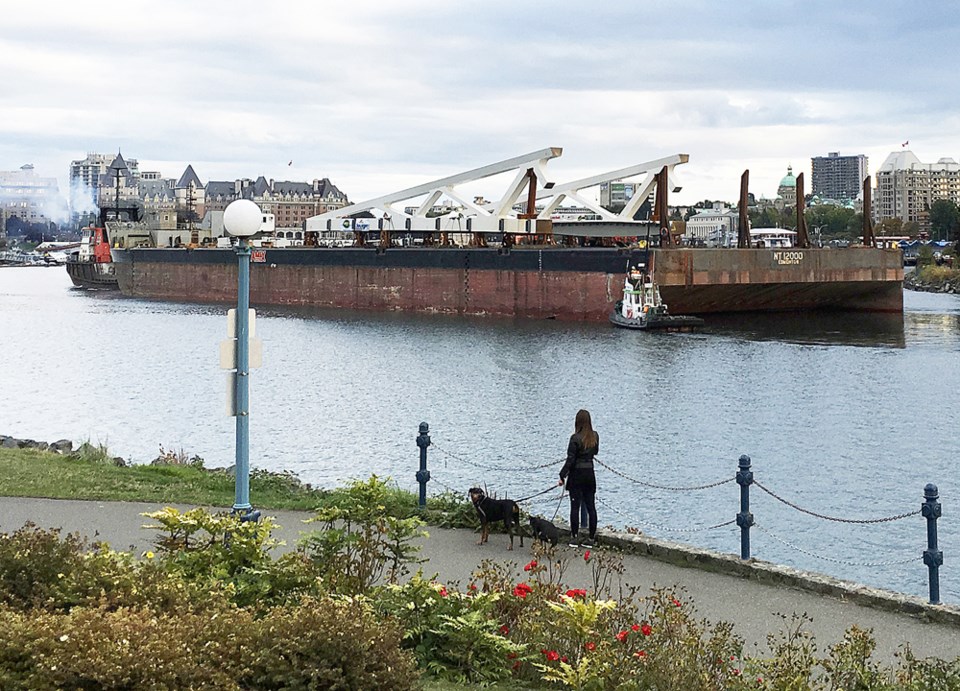The 300-ton rings that will define the look of new Johnson Street Bridge should be lifted into place in late November.
The exact timing is dependent on the availability of a massive crane known as the Dynamic Beast that is capable of lifting the pieces — including the rings and a counterweight — into place, project director Jonathan Huggett told councillors on Thursday.
“We will be in a position to start lifting and assembling the rings in the structure on Nov. 10,” Huggett said during his quarterly progress report.
The Dynamic Beast, anchored off the Lower Mainland, sits on a barge measuring 330 feet by 120 feet and is capable of lifting 900 tons.
Huggett said the marine channel will be blocked for two days for the operation, but traffic over the existing bridge will face only intermittent interruptions of, it is hoped, no more than an hour at a time.
Traffic will not be allowed on the bridge while the rings are being lifted, he said.
“Because you plan for the worst and you hope for the best. Obviously, we don’t want 300-ton rings swinging around in the breeze with anybody in traffic on that bridge,” Huggett said.
“So while it’s in the air, the traffic on that bridge will be shut down.”
The first shipment of steel, which included the north and south rings, the lower counterweight and the temporary structure used to support the components of the bridge as they’re pieced together, arrived in Victoria from China in late August and was offloaded at Port Hope Shipyard.
Crews have been at work prepping the rings for installation — completing the painting and mounting, aligning and installing support structures.
Installation of the bridge span support segments is meticulous, precise work, Huggett said.
The completed main bascule leaf, including walkways and cycling paths, will be lifted in a single operation and bolted to the rings in January.
Commissioning and testing of the bridge will be done in February and March, with the opening scheduled for March 31, Huggett said
The bridge’s cost was estimated at $63 million in 2009 and grew to $92.8 million when the contract to build it was awarded to PCL Constructors Westcoast in 2012. Construction began in May 2013, and the price is now up to $105 million.
The final bill for the project is still unknown as costs have not been determined for the fenders on the north-side bridge piers, which some have pegged at more than $2 million.
While Huggett called this a “good news” update, he said he had nothing to report on the fendering.
“Every time I have come up with a solution, I’ve made the determination that it’s too expensive and it needs to be rethought,” he said.
“So it’s worth taking the time to make sure that we come back with the most cost-effective solution that we can come to consistent with protecting your bridge.”
Huggett said he hopes to come back to council with fendering options at the end of next month.



